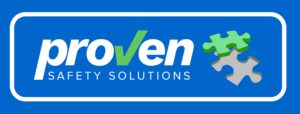Assessing control effectiveness is a crucial aspect of contemporary risk management. It helps organisations understand whether their controls are adequate and functioning as intended to mitigate risks. Several methods can be used to assess control effectiveness. Here are some commonly employed approaches:
Control Self-Assessment (CSA)
CSA involves the internal assessment of controls by the individuals responsible for their operation. It encourages a participatory approach, where control owners evaluate the design and effectiveness of controls within their areas of responsibility.
Internal Control Testing
Internal control testing involves a systematic examination of controls to determine their effectiveness. This can be done through various techniques such as walkthroughs, documentation review, and testing of transactions. Testing may include both manual and automated procedures to assess control performance.
Key Performance Indicators (KPIs)
KPIs are measurable metrics that provide insights into control effectiveness. By defining and monitoring KPIs related to control performance, organisations can assess the extent to which controls are achieving their intended objectives. For example, the percentage of incidents or breaches that occurred despite control implementation can be a useful KPI.
Control Gap Analysis
Control gap analysis involves comparing the existing controls in an organisation against a defined set of control objectives or standards. This analysis helps identify control weaknesses or gaps that need to be addressed. It may involve mapping controls to frameworks such as COSO (Committee of Sponsoring Organisations of the Treadway Commission) or ISO 31000 (International Organisation for Standardization) and assessing their adequacy and coverage.
Independent Assurance and Auditing
Independent assurance and auditing provide an objective assessment of control effectiveness. Internal auditors or external audit firms can evaluate controls to determine their efficiency, compliance with policies and regulations, and alignment with industry best practices. These assessments provide valuable insights and recommendations for improving control effectiveness.
Continuous Monitoring and Data Analytics
Leveraging technology and data analytics can enhance control effectiveness assessment. Continuous monitoring systems can detect control failures or anomalies in real-time, allowing organisations to take timely corrective actions. Data analytics techniques, such as trend analysis or anomaly detection, can identify patterns or outliers that indicate control weaknesses.
Control Maturity Assessments
Control maturity assessments evaluate the maturity level of an organisation’s control framework. It involves assessing factors such as control design, implementation, monitoring, and governance. Maturity assessments typically follow a maturity model, such as the Capability Maturity Model Integration (CMMI), to evaluate control effectiveness at different stages of maturity.
It’s important to note that a combination of these methods is often used to comprehensively assess control effectiveness. Organisations may also tailor these approaches to their specific needs, industry requirements, and risk profiles. Regular and proactive assessment of control effectiveness ensures that controls remain robust and aligned with changing risks and organisational objectives.
Proven Safety Solutions save time and money!
For specific, tailored advice, or support for your organisation, contact Proven Safety Solutions today on 0400 023 404 to discuss and improve your confidential circumstances.
If you have any specific aspects, you’d like more information on or if you have further questions, reach out by clicking here!

This blog has been written with the aid of software, including search engines, and writing tools, then checked by our team prior to release. It is general in nature.



